The order books are now open for the all-electric Peugeot e-Partner and the Citroen e-Berlingo - and that’s great news if your business is on a mission to reduce running costs.
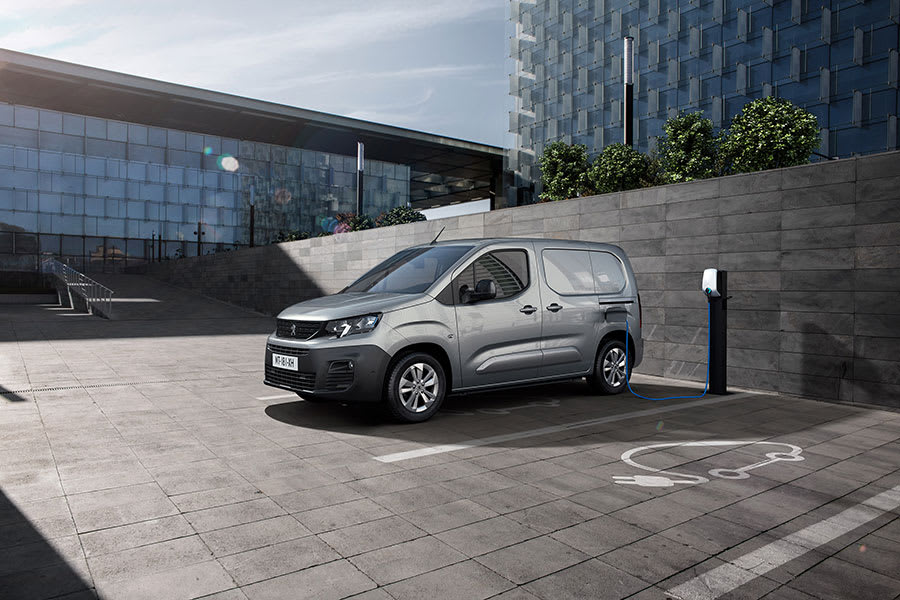
First thing’s first - why are we reviewing two vans at once? Well, there’s a very good reason for that.
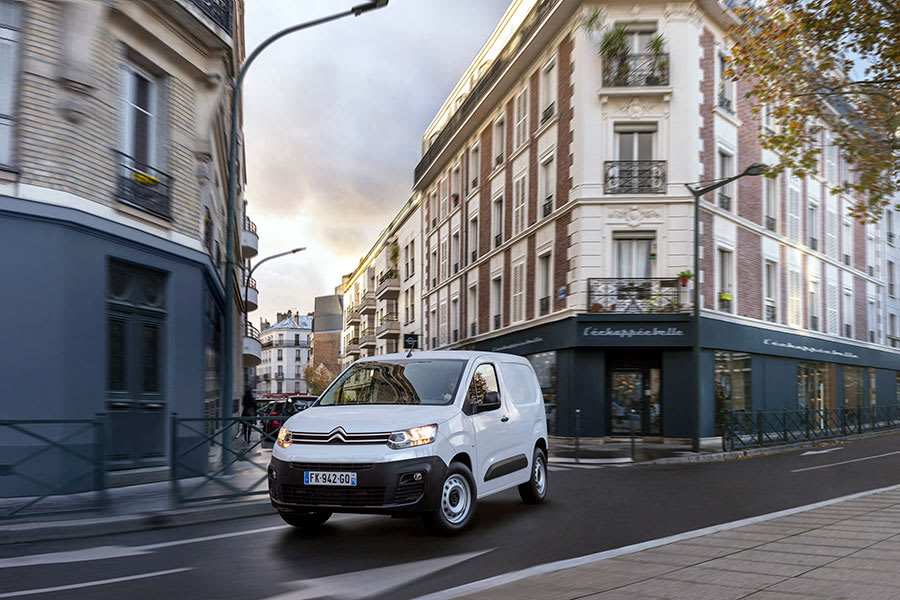
Both Citroen and Peugeot are owned by French parent company the PSA Group, and that means that sibling vehicles the e-Partner and the e-Berlingo share the same basic underpinnings. They both cost precisely the same to buy outright, too.
And sharing the same DNA is no bad thing, because they’re both a tempting lease proposition for business or fleet lease customers.
Both vans come in two body lengths, and are available as either a Crew of Panel version.
The medium sized variants of both have load volumes up to 3.9m3, while the longer variants boost the maximum load volume to 4.4m3.
The medium sized e-Partner and e-Berlingo both have a maximum payload of 803kg, while the longer versions have a slightly reduced payload at 751 kg.
All versions are 1.90m high and – thanks to a specially adapted power steering system – have an agile turning circle of just 10.8m, with the exception of the Crew vans.
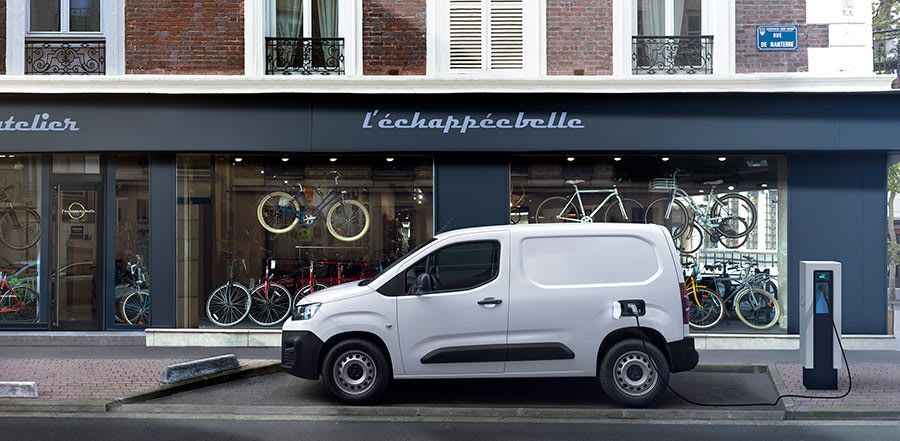
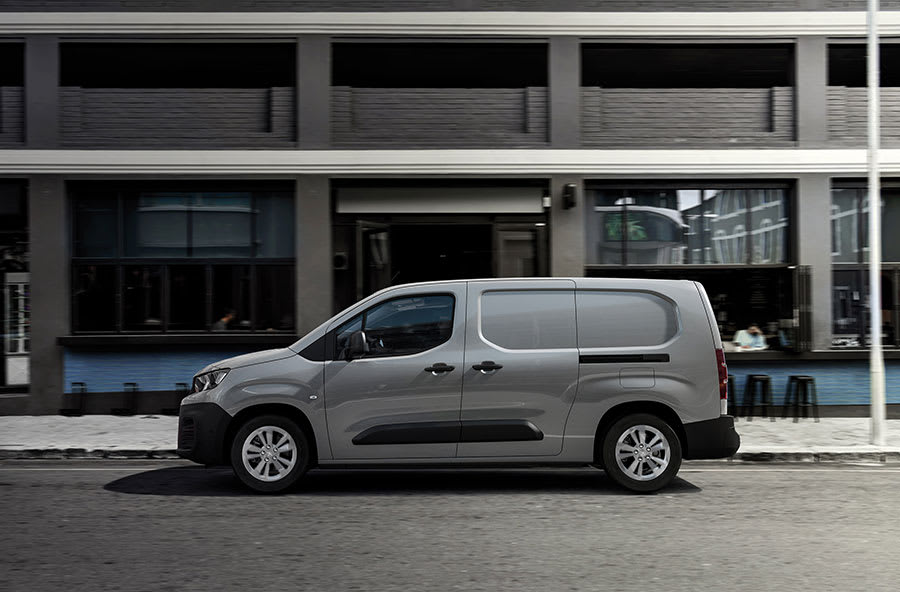
Both the Peugeot and the Citroen share exactly the same powertrain, too.
A 50kWh battery is connected to a motor producing a healthy 136hp. That should prove powerful and responsive enough to dart through congested cities. And with a range of 171 miles between charges, the e-Partner and e-Berlingo should be plenty capable of managing longer motorway jaunts.
Both brands of van come as standard with a ‘Mode 3 Type 2 Charging Cable’. What that means in practical terms is that a full 0-100 per cent charge will take 7 hours and 30 minutes. You can also choose a more powerful 11kW three-phase charger, which takes that battery replenishing time down to just five hours.
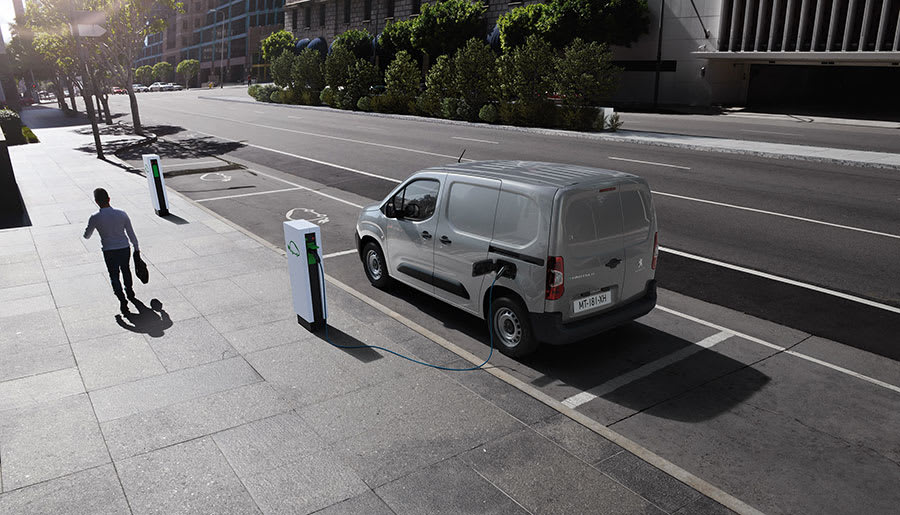
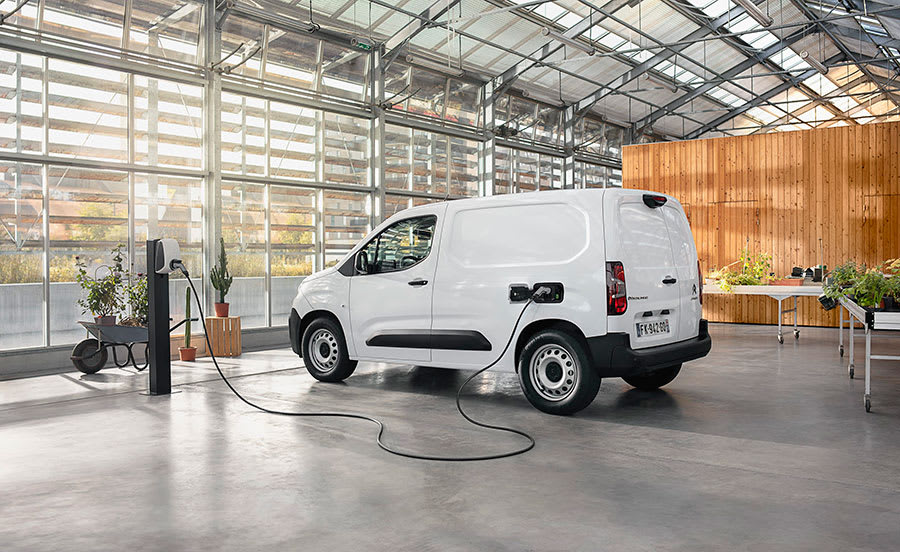
So far so similar, then. But what’s different about the Peugeot and the Citroen?
While the differences are subtle, styling could be a crucial deciding factor. The front end of the Peugeot features a sharper, perhaps more modern, snub-nose bonnet and grille, while the Citroen’s front is more traditional while also boasting lashings of chrome.
There’s also differences in trim levels, too.
The e-Partner is available in ‘Professional Premium’ and ‘Asphalt Premium’ trim from launch. Panel Van configurations are available with both trims, while Crew Van variants are sold exclusively in Professional Premium trim.
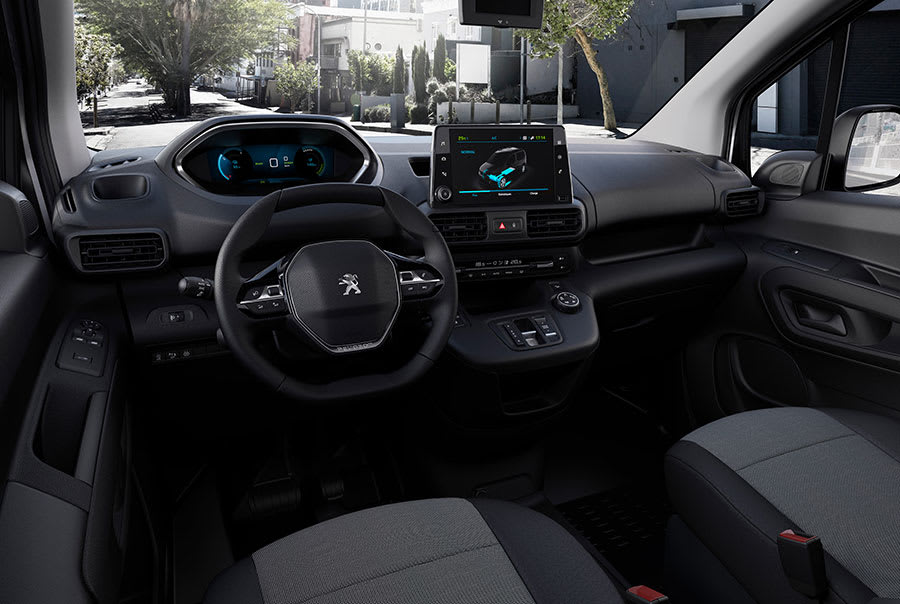
Professional Premium models get a pivoting writing table and a load-through bulkhead, air con, cruise control, and an 8-inch infotainment touchscreen. Asphalt Premium variants, meanwhile, come with 16 inch alloys, a body coloured rear bumper, acoustic insulation, sat nav, front and rear parking sensors plus side and rear cameras.
The Citroen e-Berlingo Van, on the other hand, comes in either ‘Enterprise Pro’ or ‘Driver Pro’ guise.
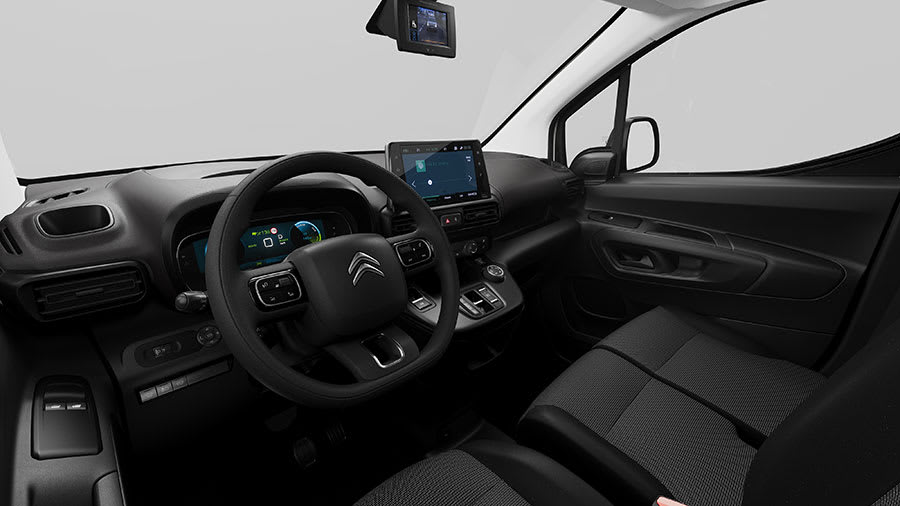
Enterprise Pro models pretty much mirrors what you get with Professional Premium e-Partner vans. But Driver Pro models have a larger 10 inch infotainment screen compared with the corresponding Peugeot model, giving it a slight advantage when it comes to the interior.
Julie David, Managing Director of Peugeot, UK, said:
“With order books now open for the new e-Partner, Peugeot customers can choose a fully electric van across our entire LCV range. This is a huge achievement for us as a brand, moving us one step closer to our target of offering an electrified variant across our entire passenger car and LCV range by 2025.”
While a Citroen spokesperson said e-Berlingo was ‘compact and agile’ and ‘ideal for fleet and local business operators’.
Enjoyed this? Read our latest news on this topic:
- All-new Vauxhall Movano-e readies for the road
- Versatile new VW Multivan hits the road
- New Citroen e-Relay launches
-
Enjoy an ‘Active Lifestyle’ with the new Citroen Berlingo
- Suzuki introduces new Jimny van
For all the latest reviews, advice and new car deals, sign up to our newsletter here
SsangYong has announced a facelift for its long-running Musso pick-up - its first overhaul since 2018.
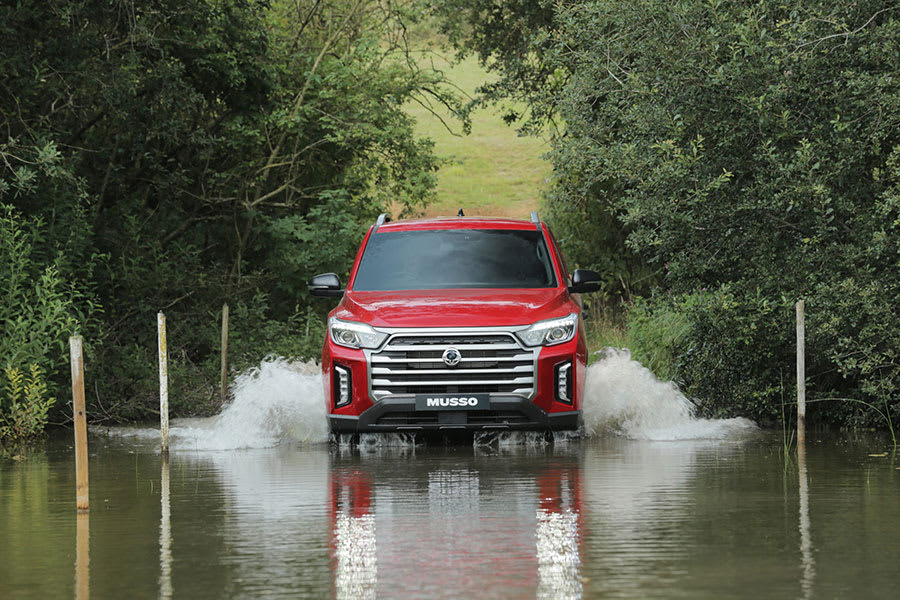
And just because the Musso represents excellent value, don’t be fooled into thinking it’s a one-trick pony.
Korean firm SsangYong has been making major inroads into the UK marketplace for a good few years now. In fact, the Musso has scooped the 4x4 Magazine’s ‘Best Value’ award for the last three years.
Now some clever tweaks to the Musso ensure that it’s as stylish as it is sturdy and should set it up for plenty more success in the future.
A SsangYong spokesperson tells us:
“Being robust and workman-like is no longer enough for pick-up trucks, with customers looking for a working vehicle that also looks good. The new exterior design of the Musso gives the vehicle a bold and muscular stance and adopts the purposeful front-end design of all new SsangYong vehicles.”
So, as well as a 1-tonne payload and the ability to also tow 3.5 tonnes, lease customers can also enjoy an enlarged new front end with a chrome radiator grille and more muscular ‘shoulders’.
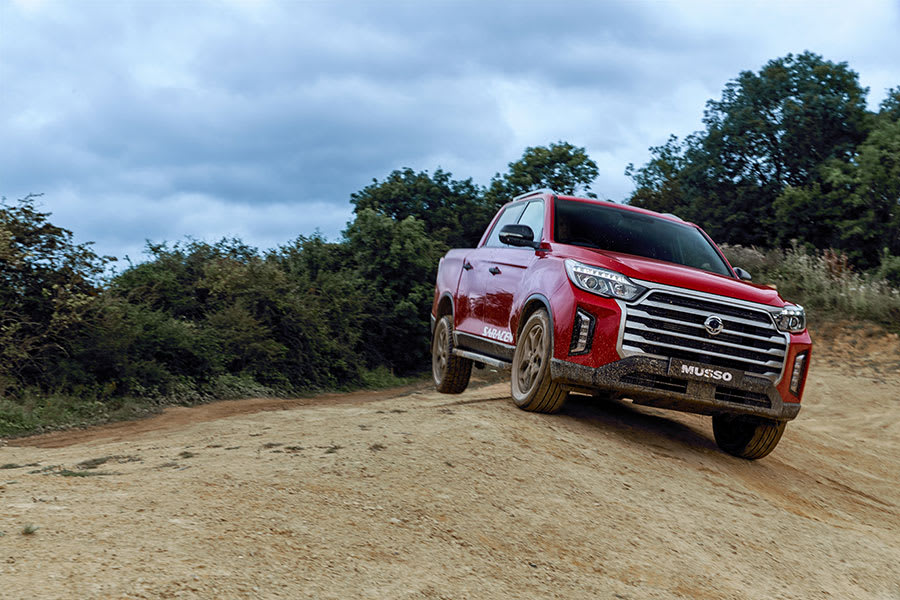
One of the largest cabin interiors in its class means there’s room for five fully grown passengers, while all models also feature a DAB radio, full phone connectivity, either a 8.0” screen or a 9.2” screen, depending on the trim level.
Cruise control and an air-conditioning system with fine dust filters also come as standard, too.
One of the Musso’s big selling points is its dependable 4x4 prowess. Power is delivered permanently to the rear wheels, but you can bring the front wheels to the party at the flick of a switch when needed, ensuring you save money on your fuel bill. High and low ratios are available as on and off-road conditions demand. The system includes hill descent control and hill start assist to provide optimum grip, traction, and safety.
The Musso is powered by a hardy ‘e-XDi220‘ diesel engine that delivers maximum power of 181ps at 3,800rpm and maximum torque of 420Nm at 1,600 to 2,600rpm. You can expect fuel economy of around 30 mpg.
Meanwhile there are four trim levels to choose from – the entry-level EX, mid-spec Rebel and the high-spec Saracen in a short-bed model, as well as the top-spec Rhino, which comes as a long bed variant only.
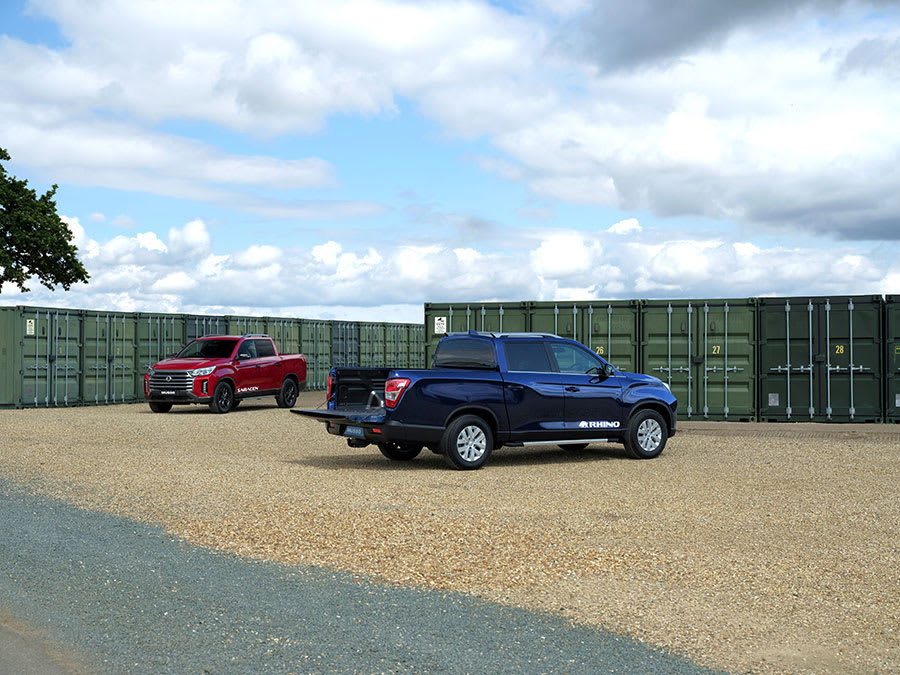
The Musso EX is aimed at those who need a ‘truck that is built for a hard day’s work at an unbeatable price’ while the Musso Rebel adds goodies like roof rails, Google CarPlay and Android Auto, a rear-view reversing camera, heated and ventilated front seats, a heated leather steering wheel and Rebel graphics.
The Musso Saracen gets a moody black exterior pack, 18-inch black alloy wheels, nappa leather seats, power adjustable drivers and front passenger seats, heated rear seats, dual zone automatic climate control, a 9.2” screen with TomTom navigation, front and rear parking sensors, black and silver side steps and Saracen graphics.
And the top-rung Musso Rhino features chunkier tyres, dark tinted rear privacy glass, a new instrument panel, LED front fog lights and Rhino graphics.
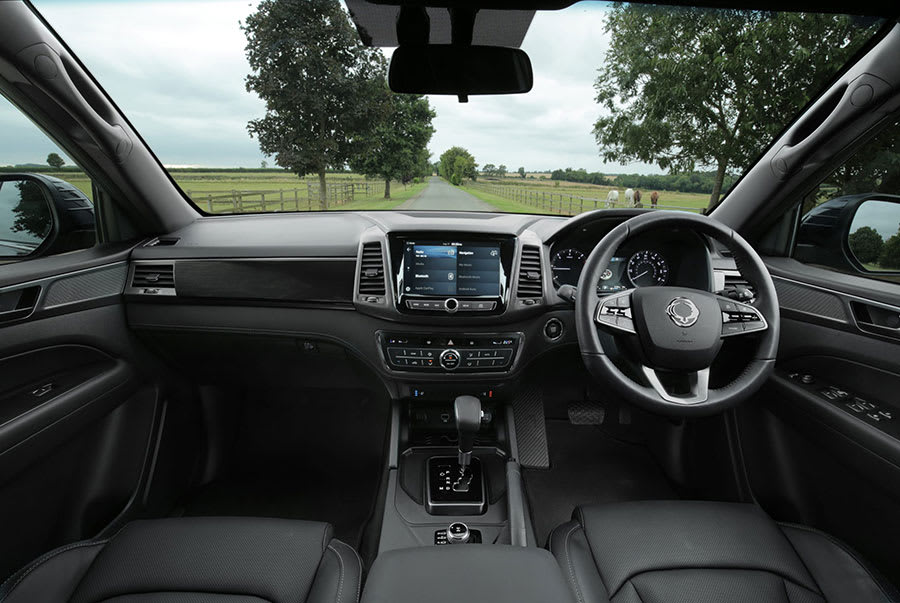
Kevin Griffin, managing director of SsangYong Motor UK, said:
“Back in 2018, SsangYong set new standards for a value-priced pick-up, with the launch of a new Musso. Now the updated 21-model year Musso has a striking new front grille and further enhancements across the range, particularly to the Saracen, and is further evidence of the brand’s change in design direction and re-generation. The Musso is great value for money and is extremely well equipped. It has a distinctive look, and like all SsangYong models offers an array of advanced safety and infotainment technologies.”
Enjoyed this? Read our latest news on this topic:
- Next gen Ford Ranger Pick-Up teased ahead of reveal
- ‘Bad-ass’ new Ford Ranger Raptor Special Edition revealed
- 2021 Isuzu D-Max revealed with better styling and updated interior
-
Best Pickups to lease in 2021
- Suzuki introduces new Jimny van
For all the latest reviews, advice and new car deals, sign up to our newsletter here
Where To Next?
For all the latest reviews, advice and new van deals, sign up to our newsletter.
Looking for a electric van? Check out our electric van lease deals.
Want to know more about leasing? Take a look at our comprehensive van leasing guides.

















